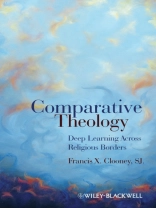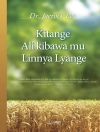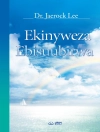Drawing upon the author’s three decades of work in comparative theology, this is a pertinent and comprehensive introduction to the field, which offers a clear guide to the reader, enabling them to engage in comparative study.
- The author has three decades of experience of work in the field of comparative theology and is ideally placed to write this book
- Today’s increasing religious diversity makes this a pertinent and timely publication
- Unique in the depth of its introduction and explanation of the discipline of ‘comparative theology’
- Provides examples of how comparative theology works in the new global context of human religiosity
- Draws on examples specific to Hindu-Christian studies to show how it is possible to understand more deeply the wider diversity around us.
- Clearly guides the reader, enabling them to engage in comparative study
Mục lục
Preface and Acknowledgments xi
Part I Starting Points 1
1 Religious Diversity and Comparative Theology 3
Diversity around Us 4
Diversity within Us 6
Comparative Theology as a Response to Twenty-first-Century Religious Diversity 8
Distinguishing Comparative Theology from Related Disciplines 9
Comparative Theology and the Academic Study of Religions 12
Comparative Theology and Interreligious Dialogue 13
Comparative Theology and the Theology of Religions 14
Comparative Theology Autobiographically Grounded 16
On the Limits of This Book 19
Looking Ahead 22
2 In Generations Past: Some Ancestors to Today’s Comparative Theology 24
Comparative Theology and the Long History of Christian Interreligious Reflection 24
Western Jesuit Scholars in India 27
Comparative Theology as a Discipline (1699–) 30
A Moderate Criticism of Missionary Scholarship and the Older Comparative Theology 35
At the End of the Era 37
3 Comparative Theology Today 41
David Tracy 42
Keith Ward 43
Robert C. Neville 45
A Note on Raimon Panikkar 47
James Fredericks 49
New Directions 50
From Theory (Back) to Practice 52
Part II Doing Theology Comparatively 55
4 From Theory to Practice 57
The Practice of (Comparative) Religious Reading 57
Intelligent Reading 59
Commentary as a Religious Practice 60
Interreligious Commentary 63
Leaving Room for Other Readers and Their Readings 66
Necessarily Elite Choices 67
5 Getting Particular: A Christian Studies Hinduism 69
The Importance of Focus 69
(Self)Identifying This Particular Comparative Theologian 70
Making a Map, Marking the Field:
Hinduism in Brief 70
Getting Particular: Mimamsa, Vedanta, and Srivaisnavism 74
Appreciating Similarities 75
Theistic Hinduism as a Useful and Comfortable Focus 77
Theology as a Hindu Discipline 78
Comparative Theology in Hinduism and Other Traditions 80
My Comparative Theology, Indebted to Hindu Theologies 83
6 “Learning to See”: Comparative Practice and the Widening of Theological Vision 87
Plenary Address at the Catholic Theology Society of America, 2003 88
Near a Goddess 88
Devi’s Beauty, Devi’s Pleasure 90
Rediscovering Mary 93
Mary and Her Son Jesus, through Muslim Eyes 96
Sojourner Truth’s Liberating God 99
All in Christ, but Still All 103
Vocation 105
After “Learning to See” 106
Part III The Fruits of Comparison 109
7 Theology After Comparison 111
Comparative Theology and the Larger Work of Theology 111
The Multiple Responsibilities of the Comparative Theologian 113
Some Theological Presuppositions Implicit in Comparative Theology 114
Comparative Theological Learning, in Particular 117
The Imago Dei and Our Destiny in Bliss 118
What “Narayana” Might Mean for the Christian 121
Encountering Goddesses 123
Comparative Theology and the Intensification of Devotion 125
Theology on a Smaller Scale 127
8 “God for Us” 128
“God for Us”: An Essay 128
A Verse, a Clue 129
What Hindus Thought about the Verse 130
Living the Verse 132
The Verse and Its Wider Context 133
An Aside on How to See God and on How God Wills to Be Seen 135
Noticing One’s First Citizenship: Reflection on Ignatian Insight and My Home Citizenship 139
What Ignatius Had to Say 140
Some Contemporary Views of the Intensification and Emptying of the Imagination in the Spiritual Exercises 143
Multiple Religious Belonging, Human but Also Divine 146
“God for Us” as Comparative Theology 151
9 Comparative Writer, Comparative Reader 154
The Comparative Theologian Transformed 155
The Comparative Theologian as Marginal Person 157
The Comparative Theologian’s New Community 160
Tasks and Opportunities for the Reader 162
Beyond This Book 164
Notes 166
Select Bibliography 172
Index 177
Giới thiệu về tác giả
Francis X. Clooney, S.J., is Parkman Professor of Divinity at Harvard University. His primary areas of scholarship are theological commentarial writings in the Sanskrit and Tamil traditions of Hindu India, and the developing field of comparative theology. He was the first president of the International Society for Hindu-Christian Studies, and, from 1998 to 2004, was coordinator for interreligious dialogue for the Jesuits of the United States. Professor Clooney is the author of numerous articles and books, including
Hindu God, Christian God (2001),
Divine Mother, Blessed Mother (2005),
Jesuit
Postmodern: Scholarship, Vocation, and Identity in the 21st Century (2006),
Beyond Compare: St. Francis and Sri Vedanta Desika on Loving Surrender to God (2008), and
The Truth, the Way, the Life: Christian Commentary on the Three Holy Mantras of the Srivaisnava Hindus (2008).







![Bìa của Brian Schrag & Julisa Rowe: Community Arts for God's Purposes [Chinese] 貼近神心意的社群藝術 Bìa của Brian Schrag & Julisa Rowe: Community Arts for God's Purposes [Chinese] 貼近神心意的社群藝術](https://static.worldofdigitals.com/thumb_webp/740/9781645083740.webp)




